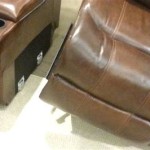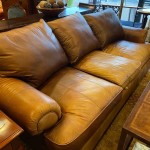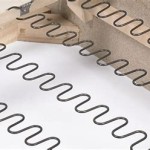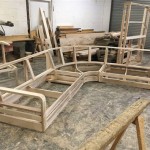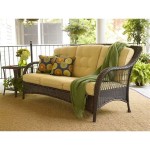How to Make a Simple Sofa Slipcover
A sofa slipcover is a versatile and cost-effective way to refresh the look of your living room. Whether you want to protect your furniture from spills and wear, or simply change up the style, making your own slipcover is a rewarding DIY project. This guide will walk you through the process of creating a simple slipcover for a standard sofa, using basic sewing techniques and readily available materials.
1. Gathering Materials and Measuring Your Sofa
Before you begin, you'll need to gather the necessary materials and take accurate measurements of your sofa. Here's a checklist:
- Fabric: Choose a durable and easy-to-clean fabric like cotton, linen, or a blend that matches your desired style. Consider the weight and texture of the fabric for comfort and drape.
- Sewing Machine: A basic sewing machine with a straight stitch and zigzag stitch capabilities will suffice.
- Sewing Supplies: You'll need thread to match your fabric, pins, fabric scissors, measuring tape, and a seam ripper.
- Optional: Fabric iron with ironing board, a sewing pattern (if desired), and elastic cord or ribbon.
To measure your sofa, follow these steps:
- Seat Width: Measure the width of the seat cushion, adding an extra inch for seam allowance on each side.
- Seat Depth: Measure the depth of the seat cushion, again adding an inch for seam allowance on each side.
- Seat Height: Measure the height of the back cushion from the seat to the top, adding an extra inch for seam allowance.
- Back Width: Measure the width of the back cushion, adding an inch for seam allowance on each side.
- Back Height: Measure the height of the back cushion from the top of the seat to the top of the back, adding an inch for seam allowance.
- Armrest Width: Measure the width of each armrest, adding an inch for seam allowance on each side.
- Armrest Height: Measure the height of each armrest from the seat to the top, adding an inch for seam allowance.
2. Cutting and Sewing the Slipcover Panels
With your measurements in hand, you can start cutting and assembling the slipcover panels. Here's a step-by-step guide:
- Cut Fabric: Use your measurements to cut rectangular panels for the seat, back, and armrests. For the seat, cut two panels that correspond to the seat width and depth measurements. For the back, cut two panels that correspond to the back width and height measurements. For the armrests, cut two panels for each armrest that correspond to the armrest width and height measurements.
- Sew Side Seams: With right sides facing, sew together the two panels for the seat, leaving one side open for turning. Repeat for the back panels and armrest panels. Press the seams open.
- Sew Bottom Seam (Optional): If you want a more finished look, you can sew a bottom seam along the open side of the seat panel before turning it right side out. This will also prevent the fabric from bunching at the bottom.
- Turn Right Side Out: Carefully turn the seat, back, and armrest panels right side out through the open side.
- Press Seams: Press all seams flat to create a smooth and professional finish.
3. Assembling and Finishing the Slipcover
Once you have the panels ready, you can assemble the slipcover and add the finishing touches. Here are the remaining steps:
- Attach Armrests: Pin the armrest panels to the seat panel, aligning the raw edges. Use a straight stitch to sew the armrests to the seat, leaving the top edge open. Repeat for the other armrest.
- Attach Back Panel: Pin the back panel to the top edge of the seat panel, aligning the raw edges. Use a straight stitch to sew the back to the seat panel. Make sure the back panel is centered on the seat panel.
- Create a Finished Edge (Optional): You can use a zigzag stitch or bias binding to finish the raw edges around the slipcover for a cleaner look and to prevent fraying.
- Add Elastic or Ties (Optional): You can incorporate elastic cord or ties to create a more fitted and secure slipcover. Sew elastic cord into the bottom edge of the slipcover or attach ties to the corners for a snug fit.
You can experiment with decorative details like piping, buttons, or a contrasting fabric for the back panel to add a unique touch to your slipcover.

Simple Sofa Slipcover Confessions Of A Serial Do It Yourselfer

Simple Sofa Slipcover Confessions Of A Serial Do It Yourselfer

Diy Couch Cover Ideas Easy Sofa Slipcovers You Can Make O Sewing

How To Make A Diy Slipcover Summer Living Room Decor

Simple Sofa Slipcover Confessions Of A Serial Do It Yourselfer

How To Make A Couch Slipcover Part 1 Diy Sofa Cover Slip Covers

No Sew Sofa Makeover How To Cover A With Fabric Drop Cloth Life By The Sea Couch Diy

Easy Going Jacquard Stretch Sofa Slipcover Non Slip Couch Cover Size Deep Teal Com

How To Get The Best Look From A Slipcover Homeleon

12 Best Sofa Slipcovers Of 2024 Cute To Protect Your Couch Or

